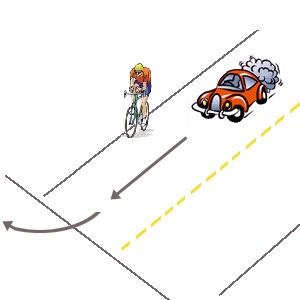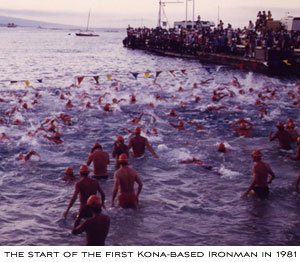Traffic plan

For you budding race directors: Mapping out your "traffic plan" helps you work through the following issues:
1. How far apart do your starting waves need to be, and how many waves do you need?
2. When will the riders will be on the course, for how long, and when will they be coming in both directions (if it's an out and back)?
3. Will the paths of the runners and cyclists ever cross or conflict?
4. How long will the runners be on the course?
5. When will roads and intersections have to be controlled? Which intersections? Are there alternate routes for motorists to get where they want to go?
6. How will parking be affected, and for how long?
7. How will athlete traffic be routed through the transition area?
It requires a lot of brain power to figure all this out. There are potential problems. Here are just a couple of examples:
1. If your course is open to traffic, and the bike ride is on a two-lane road (one lane in each direction), and your ride course is an out and back, is there enough room for motorists to safely pass cyclists?
2. If you've got multiple laps on your bike course, will your course become over-saturated with cyclists?
There is no end to the issues one can face. One RD I know needed to clear his bike course of athletes in a short span of time, as required by the local law enforcement. So he sent his athletes aged 50+ at 6:45AM, and started the youngsters at 7AM. Yes, this cleared his course early, because the oldsters got a 45 minute head start versus their usual wave leave time of 7:30. But the course also became more compacted.
There are times when starting the oldsters early makes sense. Does your bike course have a lot of room? Might as well take advantage of it, and in so doing get the course cleared early. This will move up the start of the awards ceremony, get motorists on clear roads more quickly, and require less course time for volunteers.
The most critical element of your traffic plan, however, is in considering possible cross-traffic problems. Are all your intersections monitored? Are you crossing any railroads tracks? If so, do you know the train schedule? Usually, there is no set schedule for freight traffic. Some RDs are more concerned about this than others. We had this problem in a race we produced in Oceanside (San Diego) once, after a bridge was washed out by an El Nino storm. Our alternative route required crossing tracks. We eventually settled on an entirely new transition area and course routing to fix this problem, and the resolution took weeks to work out. Yet I raced once this summer where cyclists crossed railroad tracks, and the RD's view was, "Sometimes trains come. Bummer."
It's up to you to determine just how concerned you want to be about these issues, but it's clear to me that a lot of RDs need to be more concerned than they are, just based on my own racing experience. If you end up with a gaggle of angry athletes, or worse yet a serious accident, you'll wish you'd taken the time and energy to bend your brain about your traffic plan in advance.
Finally, you have to think about how your course impacts the locals. Don't underestimate the wrath of the religious. If your Sunday-morning bike route means parishioners can't get to church, you won't have your course for very long. Invariably, I've had to deal with this issue on every Sunday race I've ever produced. I promise you that you will too. Weekend businesses will also be impacted. These are fixable concerns, but concerns nevertheless.
If there is a skill the really great race director has, it's the the ability to "see" the course with athletes on it, the way a developer or planner "sees" a city where raw land now sits.




Start the discussion at slowtwitch.northend.network